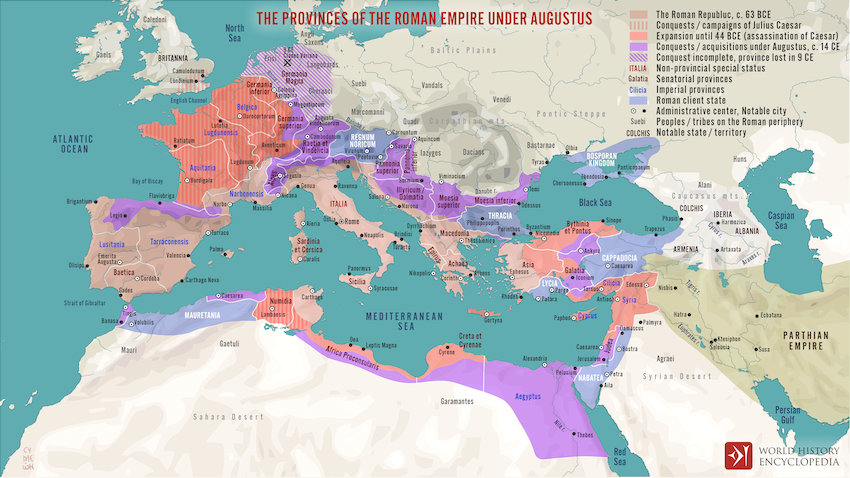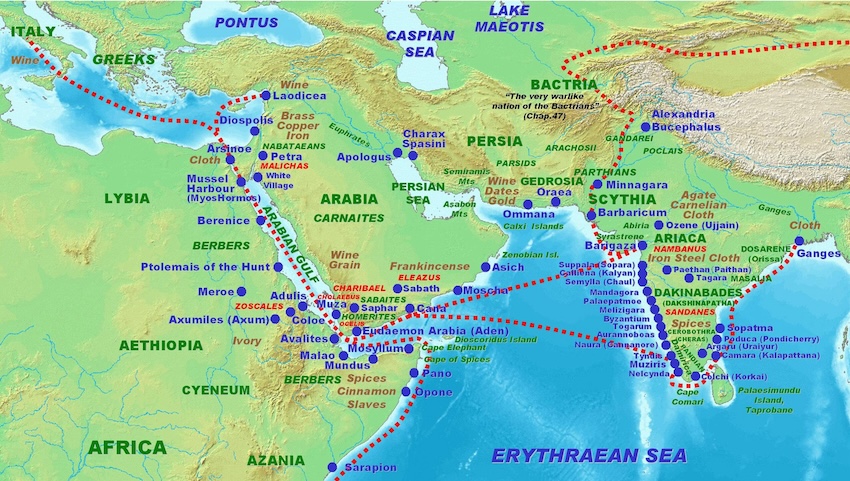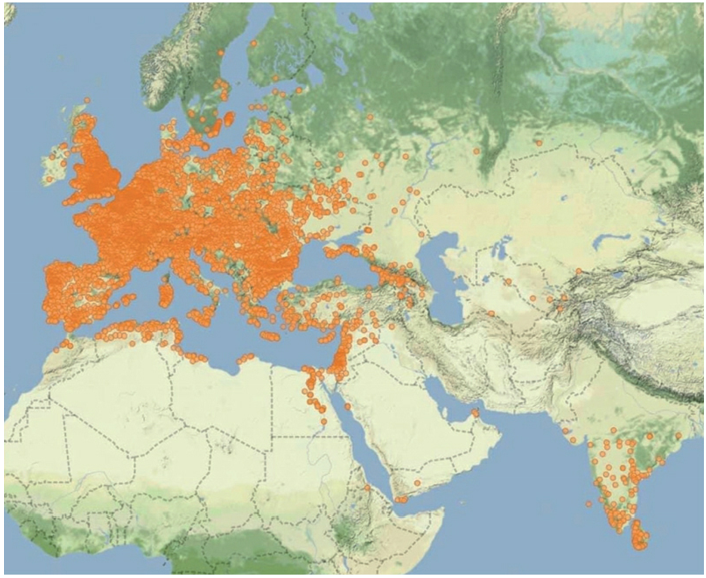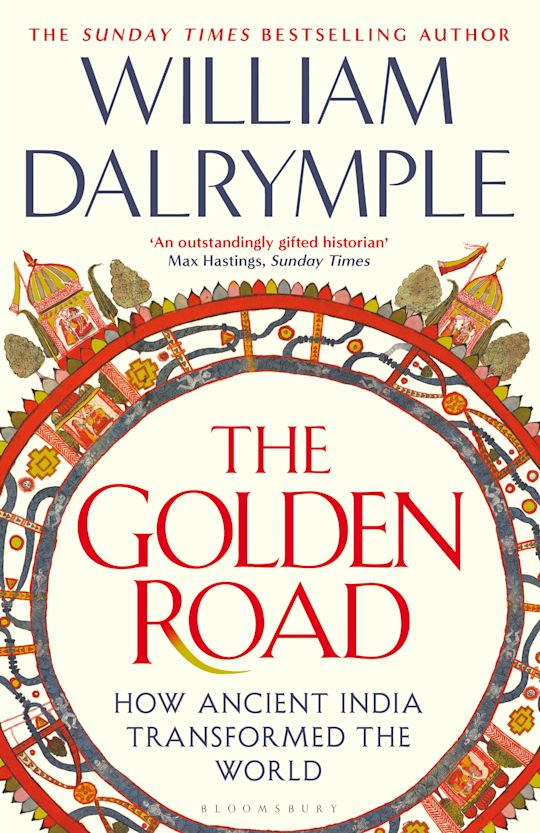We are so accustomed to viewing Christian origins within an exclusively Western orb. In our minds we have the images of a Roman Empire that stops abruptly at the Parthian border:

But what if we were to shift Italy a little further west with a view to imagining where Palestine and Egypt were positioned in the grand scheme of things?

Now try to register this newly emerging possibility:
Some economic historians now estimate that such was the scale of the Red Sea trade at this period [early imperial Rome] that the customs taxes raised by Roman officials on the trade coming through the Red Sea would alone have covered around one-third of the entire revenues that the Roman Empire required to administer its global conquests and maintain its legions, from Scotland to the borders of Persia and from the Sahara to the banks of the Rhine and Danube. . . .
Indeed according to some recent calculations, customs taxes on trade with India may have generated as much as one-third of the entire income of the Roman exchequer. . . . [A more cautious estimate by Andrew Wilson in his 2014 Cambridge Companion to the Roman Economy essay is that the quarter tax on the Red Sea ships amounted to a third of the annual cost of the army.]
Dalrymple, William. The Golden Road (pp. 6, 55, 318). Bloomsbury Publishing. Kindle Edition.
Compare this map of locations of Roman coin hoards:

It all began with Mark Antony’s defeat at the Battle of Actium and the establishment of Octavian’s/Augustus’s new imperial order. With the regular trade winds to and from India to the Red Sea a one way journey would take forty days:
Indian traders heading west used to arrive with the trade winds in early summer and ride the summer monsoon home in August; with the winds behind you, the journey from the mouth of the Red Sea to Gujarat could take as little as forty days, though if you missed the winds the round trip might take as long as a year, and cause you to take a prolonged holiday on the Nile.
Dalrymple, William. The Golden Road (p. 5). Bloomsbury Publishing. Kindle Edition.
And just as in more recent times we know Christian missionaries travelled with traders into South America and Africa, so did Buddhist monks travel to Roman ruled regions.
Hermann Detering broached the hypothesis that Buddhism was a significant player in the development of Christianity. I suspect few others have explored his arguments with much serious attention.
I wonder if a reconfiguration of our mental (and cultural) maps might encourage us to examine his thesis more closely. In my visits to different countries in south-east Asia I would always visit places of religious note and one scene always struck me: Buddha walking on water to his disciples just as Jesus…. as per these earlier posts:
https://vridar.org/2018/04/25/crossing-the-water-comparing-buddhist-and-christian-imagery/
https://vridar.org/2019/03/12/stories-of-walking-on-water-looking-for-sources/
But setting aside the question of Christian origins, the place of India in the history of the world in the past 2500 years is most definitely worth a major re-think: Please DO take a moment to listen to this podcast…..
Historian William Dalrymple on India’s Golden Road

The guest being interviewed in that podcast talks of several places I have visited — and his interview makes me want to return and re-explore those places.
How I would love to be on a committee today planning the history curriculum for school students. So much has been learned since I was in a classroom — the wide diversities of lifestyles and social organizations in prehistoric periods; how climate changes impacted civilizations; … and even the place of India as a fulcrum in world history — sending mathematical advances to the West and literature to the East. You will not regret taking the time to listen to the 50 or so minutes of that interview (pending your reading of the book in question).
Dalrymple, William. The Golden Road: How Ancient India Transformed the World. Bloomsbury Publishing, 2024.
